From smart watches to luxury stadiums: What brings technology to Russia 2018? (+ Photos and Videos)
By:@jaicyjarc
Published in:https://steemit.com
In this article: Football World Cup, Football World Cup Russia 2018, Sports, FIFA, Football, Russia, Technology

Every four years millions of people stop the rhythm and look at one of the biggest sporting events in the world. The Soccer World Cup has the ability to transcend the physical spaces of the land and settle in the collective memory of any nation as a unique event. Beyond goals and saves, each event also tries to make the planet fall in love and show the progress and technological innovations of the host country.
Russia 2018 will not be the exception and already announces a guide to not miss the superb technology show that will accompany each meeting. From smart watches manufactured just for the occasion, television broadcasts with unimaginable levels of quality, or stadiums with a temperature controlled by computers, each novelty arrives to turn the Russian appointment into a space of union between science, sport and innovation.
For the first time, referees assisted by video
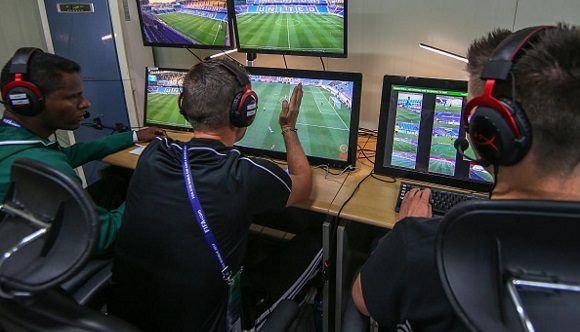
Among all the technology present in Russia 2018, Video Assisted Arbitration (VAR) is perhaps the most controversial and expected. While other sports such as baseball, judo, volleyball or wrestling have been using slow motion and image analysis for years to decide on questionable issues, football has not yet assumed that practice. According to its detractors, including UEFA officials, the video review undermines the power of decision of the judges, an essence of football since its emergence.
However, after two years of testing in competitions at all levels, FIFA agreed in March to use the VAR in the matches of the universal appointment. After the Hawkeye used in Brazil 2014 to detect if the ball crossed the goal line, this world will go down in history as the first to use video and slow motion in the decision of plays.
Although in Russia judges can only go to the VAR to clarify a doubt in situations involving goals, red cards, penalties or identity confusion, the system aims to ensure fairness in each meeting. According to a study by the Catholic University of Louvain, its use increases the correct decisions from 93 to almost 99 percent.
The new technology comes into action when the main referee requests the review of a play or if the video judges alert him of any anomaly. At that moment the team in charge of examining the images informs their perception and recommends the measure to be taken. However, it is up to the judge to accept or dismiss the advice. If you wish, you can also review the play on a screen located on the side of the field.
According to FIFA, to ensure certainty the system uses more than 30 cameras capable of recording up to 500 frames per second and follow the ball with an accuracy of 5 millimeters. Of these, eight allow the recording superlenta and six the ultralenta, while two are dedicated to determine the offside and others are located behind the goals or take shots from the air. For its creators, this technical deployment allows to maintain control of every detail throughout the game.
To cancel an offside goal, for example, those in charge of video arbitration will have virtual computer generated lines that will take into account factors such as the angle of vision, the lens distortion of conventional television cameras or the curvature of the court to calculate the exact position of the forward position line. During the analysis, another program will send those images to the television signal to insert it in the official transmission of the event.
Gianni Infantino himself, FIFA President, praised the tool and said that without it an arbitrator makes a major mistake every three matches, "but with the VAR 19 matches would be necessary to see an important mistake". In addition, he confirmed that the review process would only imply a maximum delay of two minutes, far from the nine minutes lost linked to the absences.
A technological credential against terrorist threats
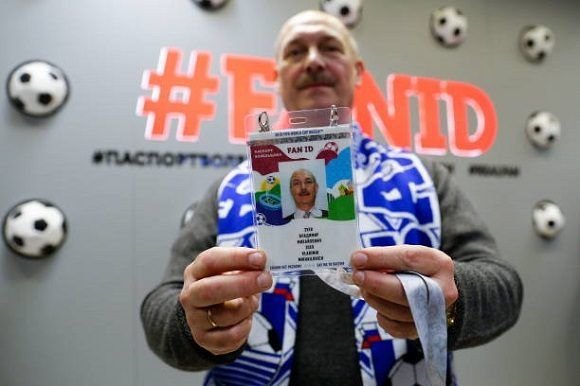
With an estimate of more than three million spectators entering the stadiums during the World Cup, the security problem becomes essential to guarantee the success of the competition. For this, the Russian government will implement a series of measures ranging from cameras for facial recognition to the increase of police forces and bomb teams. However, the implementation of a technological credential draws attention above the rest.
Named Fan ID, each fan will have one after buying his ticket to FIFA. With it you can enter and leave the country for the duration of the World Cup, as well as ten days before the opening and the same number of days after the last game. In addition, each spectator must present it before the security controls to access the stadium.
The reason of so much importance with respect to the Fan ID is that it will incorporate a chip with all the data of its carrier or up to three people previously registered by it. According to the Russian Minister of Communications, Nikolai Nikiforov, this information will allow physical control much faster, "because by just pointing a laser we will know everything about each person and thus we will assess the level of danger."
With this technological credential, the Russian government intends not only to combat the possibility of terrorist attacks, but to limit access to the stadiums of rogue bars or individuals with a history as spontaneous or in the use of flares or posters with offensive messages. In addition, by replacing the passport and obtaining it only by purchasing tickets from FIFA, it avoids falsifying documents and reselling tickets.
Despite its benefits, the Organizing Committee understood from the beginning of the idea that the use of so much personal information would create reluctance in the fans. Thus, he cared to add features to make the Fan ID more attractive and in addition to security control, the credentials will allow photos and data of the parties to be stored, and with them you can take public transport for free on the route of the stadiums.
The best seen world cup in history?
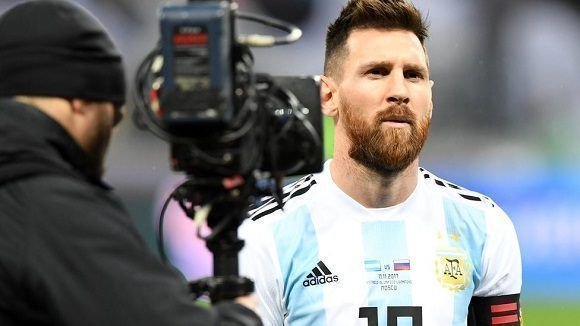
Driven by the constant development of new information and communication technologies, each of the latest World Cups competes in an audience with its predecessor. The appointment of Russia will not be the exception and hopes to reach more than three billion people around the world. However, thanks to the initiative of the Rostec company, this can not only be the most watched World Cup in history, but also the best quality television image of all time.
For the first time, each of the 64 challenges will be transmitted in Ultra High Definition or 4K, a format with a resolution four times higher than that of High Definition. For this purpose, the TV signal planners are planning to install around 37 cameras in the stadiums, all with excellent quality standards but with different functionalities.
As revealed by FIFA on its website, eight of them will deliver super-sized reproductions, two ultra-tall ones, one will be tied to a cable on the ground and the other in a drone to fly over the venues. According to the organizers, with their integration it will be possible to appreciate a play almost from any angle. In addition, almost as a show is expected the availability of some important meetings in High Dynamic Range, an image resolution higher than 4K and that still does not reach the market.
However, such high image quality requires a storage and transmission capacity far superior to the one seen so far in a world rendezvous. To meet this challenge, Rostec announces the creation of communication channels to data centers with a speed of up to 200 gigabytes per second or 20,000 images, as well as the use of 13 ground stations for satellite connection.
In Russia 2018, another technological strength will be in the free access to the wireless network for all those attending the stadiums, with coverage ready to allow the connection of up to one million people at the same time. In turn, the Chinese company Hisense disclosed the launch of a television for users to choose through an application directly connected to the cameras in the stadium which of the different shots they want to see.
Along with these developments, there will also be 5 thousand television panels with the World Cup signal, as well as the presence of more than three thousand commentators to take your message to any place in the world.
Telstar 18: touch the ball ... with your mobile phone
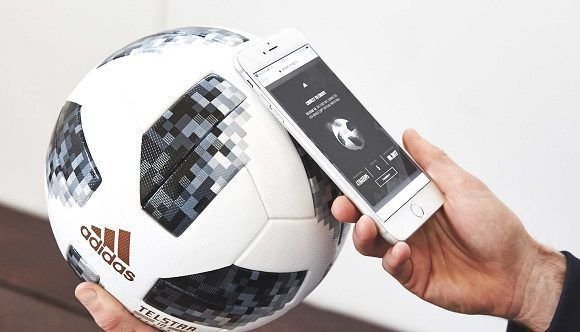
When the Adidas company was commissioned to create the official ball of the 1970 World Cup, one of its challenges was to make it visible for television. The solution was innovative: the spherical one would have black and white panels, similar to those of the Telstar satellite launched into space in 1962 to offer communication services. Thus arose the most iconic figure of a soccer ball, an image that Russia rescues as a tribute to that historical ball, but also as a mixture of modernity and tradition.
Presented in November 2017, Telstar 18 maintains the same design of black and white sections, but as a sign of belonging to the digital world its dark figures now appear pixelated. In turn, the new ball is designed to absorb less water and maintain a stable weight even when played under rainy conditions, while its seamless cover offers high performance and precision in movement. Finally, its recyclable box gives it the attractive seal of ecological product.
However, the biggest novelty of the official ball is not in its advantages for footballers, but in the incorporation of a Near Field Communication chip. For the first time, with that device fans will be able to interact with the ball using a smartphone.
Although the innovation will not be active during the time of the matches and has more commercial hooks than real practical utility, it does not stop attracting attention among sports fans. According to Adidas itself, just touching the ball with the phone will open a website with statistics, skill challenges, raffles and updated information on the results of the meetings or the user's location.
As its inspiration, Telstar 18 intends to register as one of the best soccer balls in the world. At the moment, it has already achieved the scoop with the incorporation of technological elements not directly linked to the game, although it must still overcome the opinions of attackers, defenders and goalkeepers after the initial whistle on June 14.
Luxury stadiums for a dream world cup
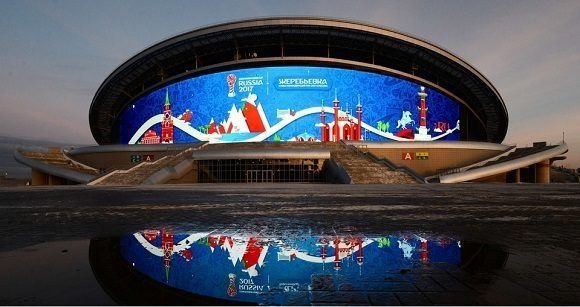
As in every world cup, the quality of the stadiums plays a determining role for both soccer players and fans. There all the passion of the moment comes together and for that reason the organizers try to create scenarios with comfort and high standards, but also with the ability to become an essential part of the show. Thus, the twelve stadiums of the World Cup await each encounter with more than one interesting surprise.
Among them, the imposing and historic Luzhniki will host seven challenges -including the inauguration and the game for the title of the planet-, and in each its more than 80 thousand fans will have another show on their heads. It turns out that in a display of technology, the roof will become a giant screen to broadcast the games. Although the images can only be seen from the air, the organizers hope that in the night games the reflection of the signal illuminates the surroundings and creates a new play of lights.
If it is about lighting, Moscow is ahead, because the other stadium in the city will dye its façade with the colors of the national teams that play inside. To do this, the Spartak managers took advantage of a previously installed lighting system to light the walls with the Russian flag, added new luminaires and changed others in position. Now, when you receive selections such as Belgium, Senegal, Tunisia or Brazil, the facade will show green, yellow or black tones.
Meanwhile, the Kazan Arena will have a multimedia facade of more than 4 thousand square meters, formed by three plasma panels with high definition transmission and among the largest in the world in a sports stadium. The Volgograd Arena, meanwhile, will have a facade with supports designed to look like fireworks when it is illuminated at night. In addition, the roof simulates the spokes of a bicycle in order to look larger and open when viewed from the bleachers or the playing field.
Other stadiums with technological and engineering boasts will be the Zenit Arena in St. Petersburg and the Ekaterinburg Arena. The first has a retractable roof and a novel intelligent air conditioning system to pump up to 5 million cubic meters of hot air inside and maintain the temperature between 15 and 21º C. The second incorporated a bleacher outside the stadium of more than 8 thousand spectators, necessary to surpass the 35 thousand seats required by FIFA.
Smart watches, parallel Internet and wifi coverage are also news
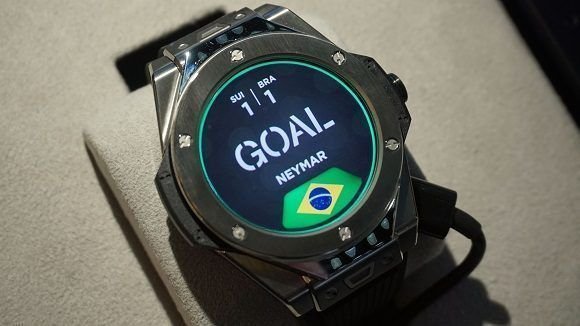
As in each version of the World Cup, the sponsoring companies take pains to exhibit their most innovative offers and attract a portion of the economic profits generated by an event of this magnitude. Thus, for example, the Swiss company Hublot created a smart watch that will inform the user details about the games or the proximity of the start of one. According to the Russian agency Sputnik, the referees could also use it to receive alerts on whether the ball crossed the goal line.
In turn, the fans will be notified of the cautions, the score of each match, the name of the scorers or substitutions during the game. For the creation of the Big Bang Referee 2018 FIFA World Cup Russia, the Swiss company joined technological giants such as Intel or Google and in its marketing strategy it planned only the manufacture of 2018 copies. According to their website, each one with a value of more than 5 thousand dollars.
Similarly, other sponsors such as the Brazilian company Vivo or the US Visa plan new services during the world. The first one launched a few weeks ago a special phone for fans and another for FIFA officials. The second, meanwhile, announced that it will enable the option of payment by terminal point of sale using smart phones or watches.
Also, FIFA announced the delivery of two mobile devices to all teams so that technicians and analysts receive information about the game and evaluate the behavior of their teams in almost real time. While in Brazil 2014 that possibility only occurred once the first 45 minutes were completed, now the analyst located in the press box will receive data at all times and can communicate with the bench to make decisions.
To do this, two optical tracking cameras will capture the movement of the players and the ball, process that data and send them directly to the analyst's work stations in each set. With this information they will be able to examine the performance of the team, highlight the areas needing attention and even send a fixed image with their annotations to the technical area or talk to the management body via radio.
Meanwhile, the host country also plans to put into operation a network that operates in parallel to the Domain Name System that governs global Internet addresses. With that decision, the Russian government aims to prevent cyber attacks and guarantee support for its strong communication network.
In video, Assisted Arbitration
On video, meet the 12 Russian stadiums 2018

Hi! This is jlk.news intelligent bot. I just upvoted your post based on my criteria for quality. Keep on writing nice posts on Steemit and follow me @jlkreiss to get premium world news updates round the clock! 🦄🦄🦄
Thank you
Get your post resteemed to 72,000 followers. Go here https://steemit.com/@a-a-a